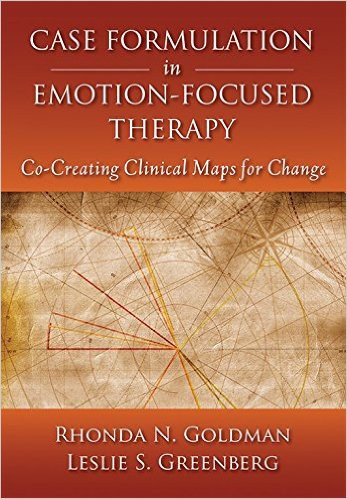封面
Case Formulation in Emotion-Focused Therapy: Co-Creating Clinical Maps for Change
作者: Rhonda N. Goldman / Leslie S. Greenberg 出版年: 2004 装帧: 平装 ISBN: 9781433818202
Case Formulation in Emotion-Focused Therapy: Co-Creating Clinical Maps for Change 1 Rhonda N. Goldman (Author), Leslie S. Greenberg PhD (Author)
This book presents a step-by-step process for constructing an emotion-focused case formulation, ready for use with clients. Emotion-focused therapy case formulation focuses on the client’s narrative content (the stories they tell) as well as emotional processing (how the client feels). By attending to the interaction between these two things and paying particular attention to the painful emotion underlying the presenting problem, therapists can make moment-to-moment decisions about how to proceed in therapy. Case examples apply the case formulation method to a cross-section of clinical disorders, including depression, anxiety, trauma, and eating disorders.
Features:
•An approach for understanding client problems and planning interventions.
•Case studies representing a cross-section of clinical disorders, including depression, anxiety, trauma, and eating disorders.
目录
序言
- 序言
第一部分:基础知识
-
绪论
- 情感聚焦疗法(EFT)简介
- 历史背景和理论基础
-
EFT的基本原理
- EFT的核心概念
- 情感调节、表达和转化
-
案例构念的重要性
- EFT中案例构念的重要性
- 案例构念作为一个动态过程
第二部分:案例构念的三个阶段
-
第一阶段:展开叙述
- 展开叙述并观察客户的情感处理风格
- 目标:
- 确定目标(63–64)
- 自我认同感作为目标(28)
- 治疗师:
- 治疗师提供的共情(71)
- 非言语表达在决策中的作用(123)
- 治疗师的反思(140)
-
第二阶段:观察情感处理风格
- 识别问题反应(131–132)
- 叙述中的主题(97)
- 创伤治疗(112)
- 共情的关系框架(107, 122)
- 共情任务(65)
- 客户中心疗法中的共情(44–45)
- 简单共情(31)
- 基于共情的任务(32, 33)
- 空椅工作作为一种干预(32, 37, 38)
- Jina案例中的微标记(120–121, 128–131)
- 空椅工作的模型(37)
- 空椅工作中自我中断的标记(114)
- 演示任务(32)
- 环境体验(68)
- 情景记忆(129)
- “治疗师的唤起功能”(Rice)(69)
- 唤起性反思(30)
- 存在主义主题(13, 83, 95–97)
-
第三阶段:共同创建焦点和识别核心情绪
- 关注过程标记和新意义(103)
- 案例说明(135)
第三部分:案例研究
-
案例研究:Sophie
- Sophie案例的详细分析(137)
-
案例研究:Jina
- Jina案例的详细分析(161)
- Jina案例中的空椅工作(182, 186)
- Jina案例中的微标记(120–121, 128–131)
- Jina案例中的两椅工作(179–180)
第四部分:应用图表
-
案例构念应用图表
- 案例构念应用图表(189)
- 复杂创伤案例构念应用图表(201–205)
结论
- 结论(213)
参考文献
- 参考文献(215)
索引
- 索引(227)
作者简介
- 作者简介(237)

